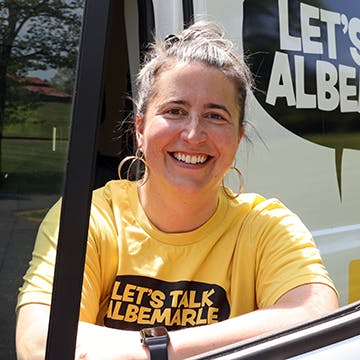Community Read - Fall 2022
Thank you for participating in this Community Read - we look forward to the next one!
For our Fall 2022 Community Read, we have chosen Esmont Virginia by Andi Cumbo-Floyd.
From the author of the book: “From the Monacan Indians who first traveled the hills to the plantation owners who created their wealth on this land and the African American people whose labor was used to build that wealth to the stone-quarrying industries and the commercial communities that surrounded them, the story of Esmont is rich and very much ongoing. In this book, you will discover some of the stories that make this quiet community so important, and you may just find yourself inclined to make a visit to this rural place with roots that go deep in the stone of its land.”
Copies of the book will be available to pick up for free at these locations:
- The Yancey Community Center
- Albemarle County Department of Social Services (1600 5th St, Charlottesville VA 22902)
- Chris Greene Lake -- in Little Free Library (LFL) by the trailhead closest to the park entrance
- Charlotte Humphris Park --in LFL by the park kiosk
- Mint Springs Valley Park -- in LFL at the upper parking lot
The book is also available for purchase through the local nonprofit, Friends of Esmont.
Below, you will find two sections: Virtual Book Club and Community Forum. Please take time to explore these tools and participate in the conversation!
Thank you for participating in this Community Read - we look forward to the next one!





